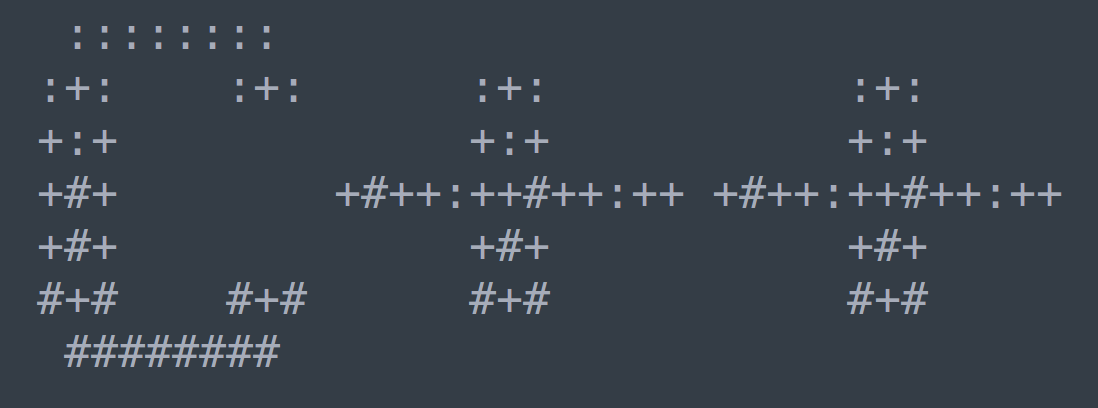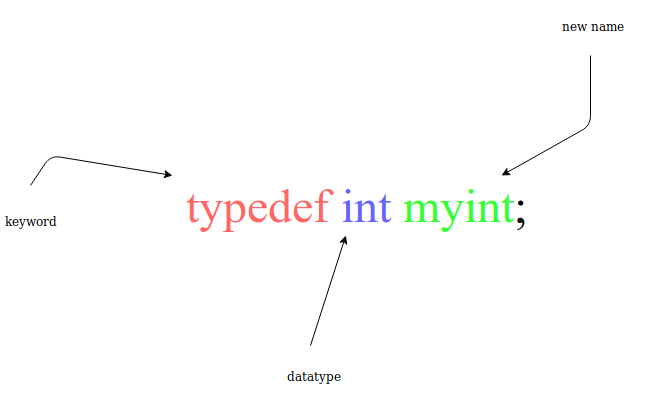本篇短文将简短的介绍奇异递归模板模式(Curiously Recurring Template Pattern,CRTP ),CRTP是C++模板编程时的一种惯用法(idiom):把派生类作为基类的模板参数。更一般地被称作F-bound polymorphism。
1980年代作为F-bound polymorphism被提出。Jim Coplien于1995年称之为CRTP。
CRTP在C++中主要有两种用途:
静态多态(static polymorphism) 添加方法同时精简代码
1.静态多态 先看一个简单的例子:
1 2 3 4 5 6 7 8 9 10 11 12 13 14 15 16 17 18 19 20 21 22 23 24 25 26 27 #include <iostream> using namespace std ;template <typename Child>struct Base { void interface () { static_cast <Child*>(this )->implementation(); } }; struct Derived :{ void implementation () { cerr << "Derived implementation\n" ; } }; int main () Derived d; d.interface(); return 0 ; }
这里基类Base为模板类,子类Drived继承自Base同时模板参数为Drived,基类中有接口interface而子类中则有接口对应实现implementation,基类interface中将this通过static_cast转换为模板参数类型,并调用该类型的implemention方法。由于Drived继承基类时的模板为Drived类型所以在static_cast时会转换为Drived并调用Drived的implemention方法。(注意这里采用的时static_cast而不是dynamic_cast,因为只有继承了Base的类型才能调用interface且这里是向下转型,所以采用static_cast是安全的。 )
通过CRTP可以使得类具有类似于虚函数的效果,同时又没有虚函数调用时的开销(虚函数调用需要通过虚函数指针查找虚函数表进行调用),同时类的对象的体积相比使用虚函数也会减少(不需要存储虚函数指针),但是缺点是无法动态绑定。
下面是关于静态多态的第二个例子:
1 2 3 4 5 6 7 8 9 10 11 12 13 14 15 16 17 18 19 20 21 22 23 24 25 26 27 28 29 30 31 32 33 34 35 36 37 38 39 40 41 42 43 template <typename Child>class Animal { public : void Run () { static_cast <Child*>(this )->Run(); } }; class Dog :public Animal<Dog>{ public : void Run () { cout << "Dog Run" << endl ; } }; class Cat :public Animal<Cat>{ public : void Run () { cout << "Cat Run" << endl ; } }; template <typename T>void Action (Animal<T> &animal) animal.Run(); } int main () Dog dog; Action(dog); Cat cat; Action(cat); return 0 ; }
这里Dog继承自Animal且模板参数为Dog,Cat继承自Animal且模板参数为Cat,Animal,Dog,Cat中都声明了Run,而Animal中的Run是通过类型转换后调用模板类型的Run方法实现的。在Action模板函数中接收Animal类型的引用(或指针)并在其中调用了animal对象的Run方法,由于这里传入的是不同的子类对象,因此Action中的animal也会有不同的行为。
2.添加方法,减少冗余 假设现在我们需要实现一个数学运算库,我们需要支持Vector2,Vector3,Vector4…等类型,如果我们将每个类分别声明并实现如下:
1 2 3 4 5 6 7 8 9 10 11 12 13 14 15 16 17 18 19 20 21 22 23 24 25 26 27 28 29 30 31 32 33 34 35 36 37 38 struct Vector3 { float x; float y; float z; Vector3() = default ; Vector3(float _x, float _y, float _z); inline Vector3& operator +=(const Vector3& rhs); inline Vector3& operator -=(const Vector3& rhs); }; inline Vector3 operator +(const Vector3& lhs, const Vector3& rhs);inline Vector3 operator -(const Vector3& lhs, const Vector3& rhs);struct Vector2 { float x; float y; Vector2() = default ; Vector2(float _x, float _y); inline Vector2& operator +=(const Vector2& rhs); inline Vector2& operator -=(const Vector2& rhs); }; inline Vector2 operator +(const Vector2& lhs, const Vector2& rhs);inline Vector2 operator -(const Vector2& lhs, const Vector2& rhs);
我们会发现需要为每个类型都实现+=, -= ,++ , – , + , -等运算符重载,而且每个类型的一些运算符,行为都很类似,而且可以使用其他的运算符进行实现,比如+=, -=, ++, –都可以采用+,-运算符进行实现。这时我们就可以采用CRTP抽离出这些共同的类似方法,减少代码的冗余:
1 2 3 4 5 6 7 8 9 10 11 12 13 14 15 16 17 18 19 20 21 22 23 24 25 26 27 28 29 30 31 32 33 34 35 36 37 38 39 40 41 42 43 44 45 46 47 48 49 50 51 52 53 54 55 56 57 58 59 60 61 62 63 64 65 66 template <typename T>struct VectorBase { T& underlying () { return static_cast <T&>(*this ); } T const & underlying () const { return static_cast <T const &>(*this ); } inline T& operator +=(const T& rhs) { this ->underlying() = this ->underlying() + rhs; return this ->underlying(); } inline T& operator -=(const T& rhs) { this ->underlying() = this ->underlying() - rhs; return this ->underlying(); } }; struct Vector3 :public VectorBase<Vector3>{ float x; float y; float z; Vector3() = default ; Vector3(float _x, float _y, float _z) { x = _x; y = _y; z = _z; } }; inline Vector3 operator +(const Vector3& lhs, const Vector3& rhs){ Vector3 result; result.x = lhs.x + rhs.x; result.y = lhs.y + rhs.y; result.z = lhs.z + rhs.z; return result; } inline Vector3 operator -(const Vector3& lhs, const Vector3& rhs){ Vector3 result; result.x = lhs.x - rhs.x; result.y = lhs.y - rhs.y; result.z = lhs.z - rhs.z; return result; } int main () Vector3 v0 (6.0f , 5.0f , 4.0f ) ; Vector3 v2 (4.0f , 5.0f , 6.0f ) ; v0 += v2; v0 -= v2; return 0 ; }
通过把+=, -=等操作放到基类中并采用+ ,-运算符实现,这样一来所有继承自VectorBase的类,只要其定义了+,-运算符就可以自动获得+=, -=等运算符,这样大大的减少了代码中的冗余。
在有多个类型存在相同方法,且这些方法可以借助于类的其他方法进行实现时,均可以采用CRTP进行精简代码。
参考:
1.The Curiously Recurring Template Pattern (CRTP)
2.The cost of dynamic (virtual calls) vs. static (CRTP) dispatch in C++
3.https://zh.wikipedia.org/wiki/%E5%A5%87%E5%BC%82%E9%80%92%E5%BD%92%E6%A8%A1%E6%9D%BF%E6%A8%A1%E5%BC%8F
PS:附加std::enable_shared_from_this相关内容
假如在c++中想要在一个已被shareptr管理的类型对象内获取并返回this,为了防止被管理的对象已被智能指针释放,而导致this成为悬空指针,可能会考虑以share_ptr的形式返回this指针,代码实现如下:
1 2 3 4 5 6 7 8 9 10 11 12 13 14 15 16 17 18 19 20 struct Bad { std ::shared_ptr <Bad> getptr () return std ::shared_ptr <Bad>(this ); } ~Bad() { std ::cout << "Bad::~Bad() called\n" ; } }; int main () { std ::shared_ptr <Bad> bp1 = std ::make_shared<Bad>(); std ::shared_ptr <Bad> bp2 = bp1->getptr(); std ::cout << "bp2.use_count() = " << bp2.use_count() << '\n' ; } return 0 ; }
但是上面的写法是完全错误 的,因为share_ptr内部存储了两个指针,一个指向被管理对象,另一个指向控制块。控制块内存有删除器,占有被管理对象的 shared_ptr 的数量,涉及被管理对象的 weak_ptr 的数量等信息,一旦占有被管理对象的shared_ptr的数量减少至0,被管理的对象就会通过删除器被释放(控制块会等到weakptr计数器也清0时才会释放)。上面的代码中由于在返回this的sharedptr时,又通过this指针构造了一个shared_ptr,这样就会导致有两个shared_ptr通过不同的控制块,管理相同的对象。一旦其中一个shared_ptr释放了所管理的对象,那么另一个shared_ptr将会变成非法的。
而正确的写法应该是让需要返回this指针的类,继承std::enable_shared_from_this模板类,同时模板参数为该类的类型:
1 2 3 4 5 6 struct Good :std ::enable_shared_from_this<Good> { std ::shared_ptr <Good> getptr () return shared_from_this(); } };
至于为什么要这样做,可以参见以下的伪代码:
1 2 3 4 5 6 7 8 9 10 11 12 13 14 15 16 17 18 19 20 21 22 23 24 25 26 27 28 29 30 31 32 33 template <class D >class enable_shared_from_this {protected : constexpr enable_shared_from_this () enable_shared_from_this(enable_shared_from_this const &) { } enable_shared_from_this& operator =(enable_shared_from_this const &) { return *this ; } public : shared_ptr <T> shared_from_this () return self_; } shared_ptr <T const > shared_from_this () const return self_; } private : weak_ptr<D> self_; friend shared_ptr <D>; }; template <typename T>shared_ptr <T>::shared_ptr (T* ptr) { if (is_base_of<enable_shared_from_this<T>, T>::value) { enable_shared_from_this<T>& base = *ptr; base.self_ = *this ; } }
enable_shared_from_this类使用了CRTP的写法,类中存储了一个weak_ptr,使用这个weak_ptr初始化shared_ptr时,如果这个类型是否继承自enable_shared_from_this,则会使shared_from_this中构造的shared_ptr共享weak_ptr指向的对象的所有权(即从weak_ptr构造的shared_ptr和构造weak_ptr的shared_ptr共享控制块)(std::shared_ptr::shared_ptr - cppreference.com 参见构造函数11),这样就可以保证shared_from_this返回的shared_ptr的内存安全,不会像第一个例子那样出现悬空指针。
(enable_shared_from_this中的weak_ptr是通过shared_ptr的构造函数初始化的,所以必须在shared_ptr构造函数调用之后才能调用shared_from_this,而且不能对一个没有被shared_ptr接管的类调用shared_from_this,否则会产生未定义行为)
以上内存参考自:
https://zh.cppreference.com/w/cpp/memory/enable_shared_from_this std::shared_ptr - cppreference.com How std::enable_shared_from_this::shared_from_this works enable_shared_from_this类的作用和实现 - 杨文的博客 - 博客园 关于boost中enable_shared_from_this类的原理分析 - 阿玛尼迪迪 - 博客园





